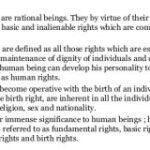Parliament adjourned sine die: Constitutional Provisions Explained

The Lok Sabha was adjourned sine die which brought the nearly two-month long Budget session to an end.
The Indian Parliament comprises of the President and the two Houses-Lok Sabha(House of the People) and Rajya Sabha(Council of States).
The President has the power to summon(Art.85(1)) and prorogue(Art.85(2a)) either House of Parliament or to dissolve Lok Sabha(Art.85(2b)).
Adjournment
This is short recess within a session of the Parliament, called by the Presiding Officer of the House. An adjournment suspends the work in a sitting for a specified time, which may be hours, days or weeks. In this case, the time of reassembly is specified. An adjournment does not bring to end a session, but merely postpones the proceedings of the house to a future time and date.
Adjournment Sine Die
When the house is adjourned by the Presiding Officer without fixing any date or time of the next meeting; means terminating a sitting of Parliament for an indefinite period.
Prorogation
This is done by the President on the advice of the Council of Ministers.
Prorogation means the termination of a session of the House. Prorogation terminates both the sitting and session of the House.





0 Comments